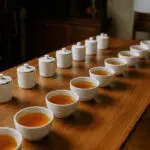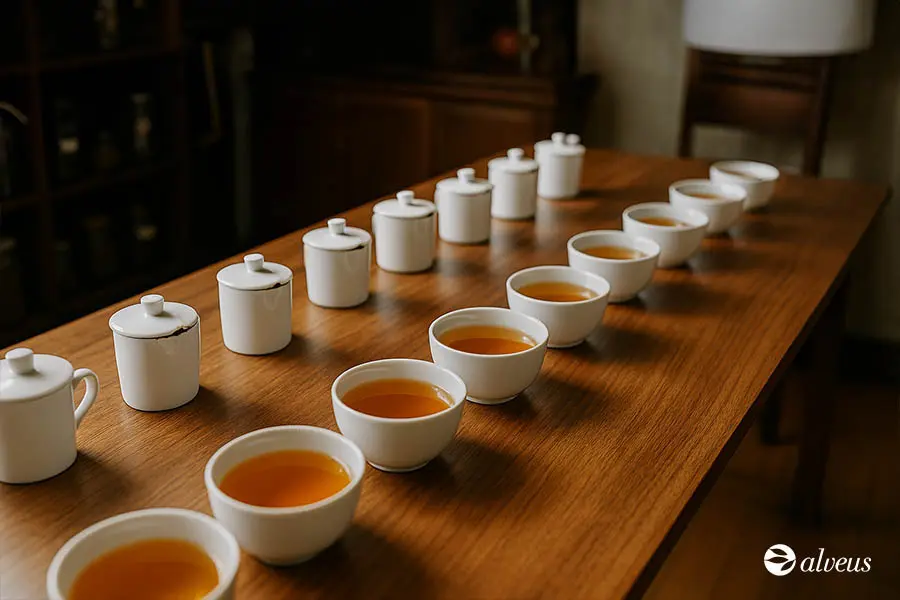The history of medicinal plants is deeply intertwined with the development of civilisations and the evolution of medicine.
From the earliest records in ancient civilisations such as Egypt, India, and China to the present day, medicinal plants have played a key role in human health and well-being.
Understanding this evolution allows tea businesses to enrich their offerings and meet the growing demand for natural products.
In this post, we will explore the background of medicinal plants and how these herbs have transcended cultural and temporal boundaries, becoming an essential element in both traditional medicine and modern infusion practices.
If you want to learn more about what medicinal plants are and how they work, we invite you to read our dedicated article on this topic.
Origins of Medicinal Plants
The first civilisations regarded medicinal herbs as gifts from the gods, filled with magical powers. Their importance was reflected in ancient cultures such as Egyptian, Indian, and Chinese, where they were essential for medicine and rituals.
The origins of medicinal plants date back more than 60,000 years. Excavations such as Shanidar in Iraq have revealed remains of ephedra and other medicinal herbs, suggesting that plants were already used both in funerary rituals and medicinal practices in early civilisations.
In India, the Vedic texts of the Vedas (1500 BCE) laid the foundations of Ayurvedic medicine, which is still practised today. Plants such as turmeric (to reduce inflammation) and neem were essential in their treatments.
These early references to medicinal plants laid the groundwork for a herbal tradition that would evolve over millennia.
Antiquity, Systematization, and the Foundation of Herbal Traditions
As civilisations developed, the use of medicinal plants transitioned from mystical to practical applications. Various texts documented their uses with greater precision, marking the beginning of a more scientific approach.
In the Greco-Roman world, Hippocrates and Galen integrated plants into their medical theories. Hippocrates, considered the father of medicine, proposed that health depended on balancing bodily humours, while Galen compiled extensive treatises on medicinal herbs that influenced European medicine for centuries.
Between 300 BCE and 600 CE, the herb trade connected Europe, Asia, and the Middle East, facilitating the exchange of knowledge and the introduction of spices such as clove, transported from the Moluccas to Egypt.
Authors like Dioscorides consolidated this knowledge in works like De Materia Medica, cataloguing over 600 medicinal herbs and serving as a key reference for centuries.
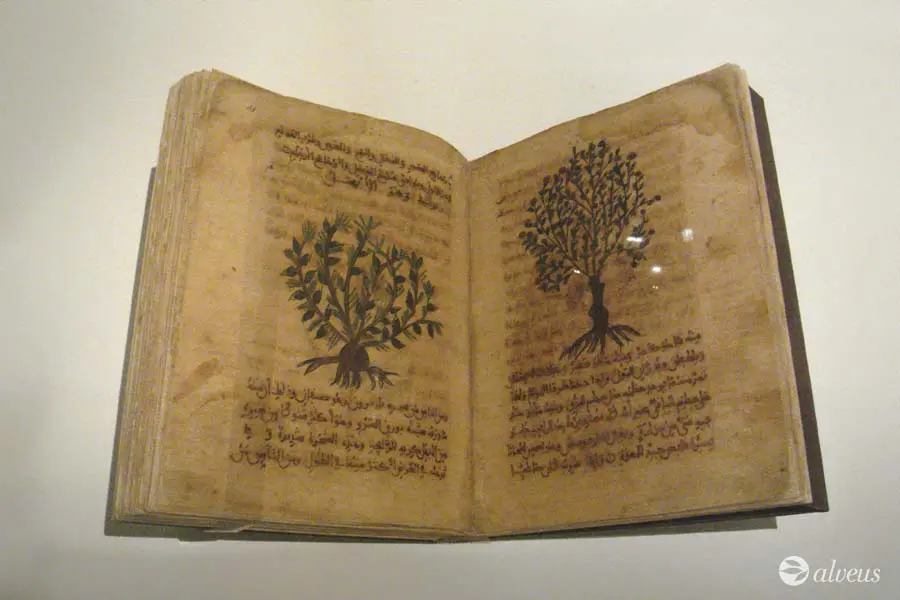
This period marked a turning point in the history of medicinal plants, shifting from mystical associations to a more systematic and evidence-based application. Moreover, cultural interconnections laid the foundation for the future popularity of tea as a therapeutic beverage.
The Middle Ages and the Preservation of Herbal Medicine
During the Middle Ages, herbal medicine was deeply tied to religion, superstition, and practical knowledge.
In Europe, monasteries played a crucial role in preserving herbal knowledge. Monks cultivated medicinal gardens and wrote manuscripts compiling recipes and uses of local herbs, such as sage (for sore throats) and garlic (as a natural antibiotic).
Beyond monasteries, local healers preserved and expanded folk wisdom, using herbs to address the everyday health needs of communities.
While Europe struggled with humoral theory-based medicine, the Arab world thrived in the field of herbal medicine. Avicenna, author of The Canon of Medicine, merged Greek, Roman, and Islamic knowledge into a compendium that influenced medicine for centuries.
In Central and South America, indigenous peoples developed a profound relationship with their natural surroundings, using native herbs for various ailments. The Aztecs and Mayans, for example, used sarsaparilla for skin conditions.
These herbal traditions reflected a blend of practical and mystical knowledge, complementing the practices of other regions.
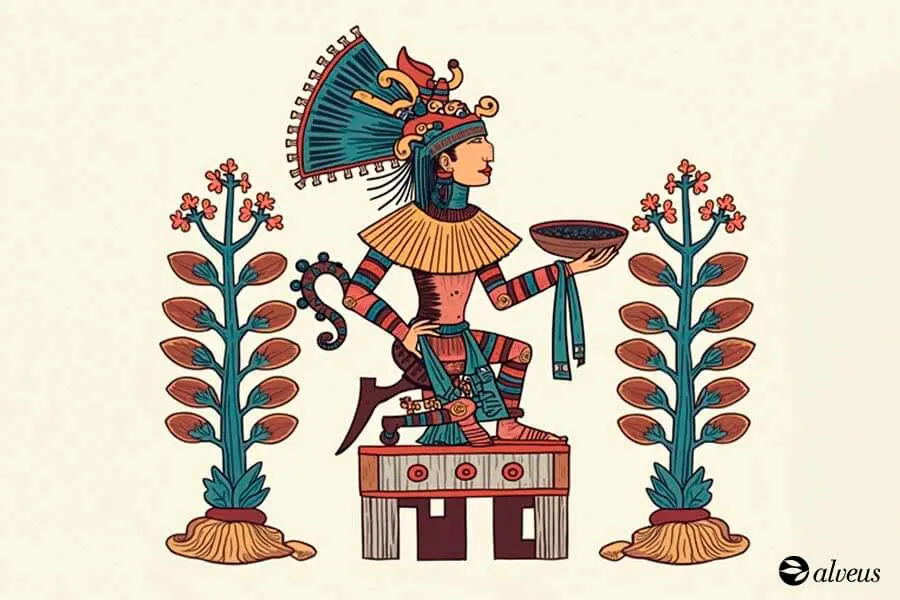
The Renaissance and the Globalization of Herbal Knowledge
The Renaissance sparked renewed interest in medicinal plants. The invention of the printing press allowed herbalists like Nicholas Culpeper to widely share their knowledge.
During this period, European explorations introduced new medicinal plants from the Americas, Africa, and Asia, such as:
- Quinine: Used to treat malaria.
- Echinacea: A North American plant recognised for its immune-boosting properties.
The trade of herbs led to the diversification of infusions and medicinal preparations, experimenting with combinations of exotic spices and local plants—laying the foundation for the widespread consumption of tea.
The Industrial Revolution and the Divide Between Medicine and Herbalism
The Industrial Revolution marked a turning point in medicine. While chemistry began dominating pharmaceutical development, medicinal plants remained important.
A key example is digitalis, derived from foxglove, which continued to be essential in treating heart conditions.
However, this era also saw the rise of legal restrictions on herbal practitioners in Europe and America. Despite this, figures like Samuel Thomson popularised a natural approach to health, advocating for herbs like cayenne pepper and ginger.
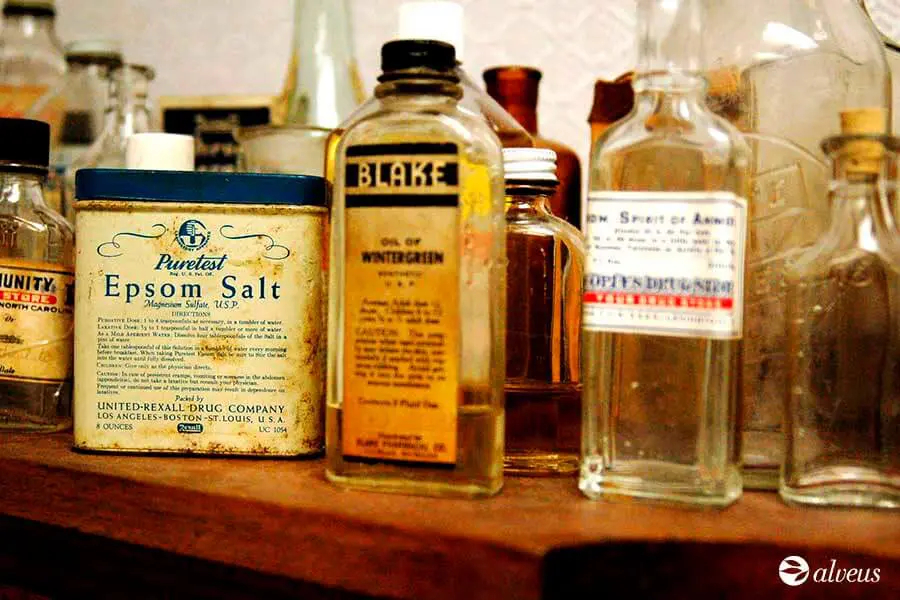
The Revival of Medicinal Plants in the 20th Century
The 20th century saw a rediscovery of medicinal plants, driven by movements like naturopathy and holistic medicine.
Additionally, it was documented that on the Russian front, calendula-based remedies were used to accelerate wound healing. This highlighted their effectiveness in contexts where pharmaceutical resources were limited.
This period also marked the beginning of more detailed scientific research into the properties of medicinal plants, such as Camellia sinensis, which gives rise to green tea and was found to have potent antioxidants, boosting its global popularity.
Today, herbs like ginkgo biloba, used in the 20th century to improve memory, and St. John’s wort, known for treating mild depression, have been integrated into both conventional medicine and therapeutic infusions.
Modern Applications and the 21st Century in Medicinal Plants
In the 21st century, medicinal plants have gained significant relevance in health and wellness, adapting to new trends like personalisation, holistic well-being, and sustainability.
Advances in science have supported the benefits of medicinal plants, highlighting the properties of turmeric, ginseng, and green tea, known for their positive effects on overall well-being and energy.
Another notable trend is the integration of technology in the production and distribution of personalised blends of medicinal plants, infusions, and teas. Businesses now allow customers to create specific combinations based on their preferences and needs.
Additionally, sustainability plays a key role, in promoting the organic cultivation of medicinal plants and the use of eco-friendly packaging, responding to a growing demand for natural and environmentally respectful products.
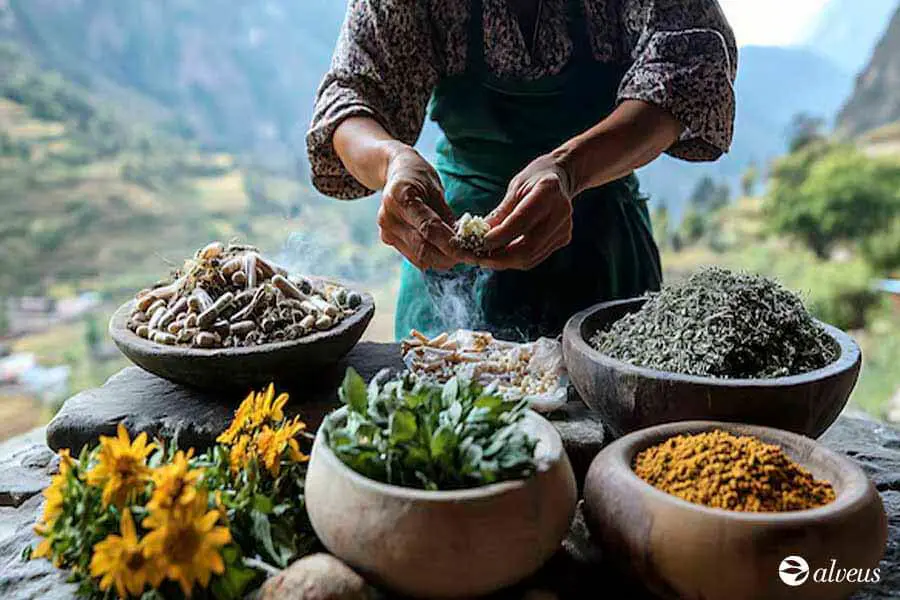
Today, the market for herbal infusions continues to thrive, with blends designed for specific needs such as:
- Reducing stress and promoting relaxation: Infusions with ashwagandha and chamomile.
- Supporting the immune system: Blends with echinacea, ginger, and turmeric.
- Enhancing athletic performance: Teas with ginseng and matcha.
In summary, medicinal plants remain a modern and accessible option for those seeking to improve their well-being in a holistic and environmentally respectful way.
Conclusions on the Evolution and History of Medicinal Plants
Throughout history, medicinal plants have gone from being considered divine gifts to becoming fundamental pillars of medicine and human well-being. From their use in rituals in ancient civilisations to their integration into modern pharmacology and the infusion market, their evolution demonstrates their continued importance in everyday life.
Today, the resurgence of interest in natural and holistic medicine has driven new research into their properties. Additionally, their application in sectors like cosmetics, nutrition, and phytotherapy continues to expand.
If you work in the tea and infusion industry, deepening your knowledge of this topic will not only help you enrich your product offerings but also connect with a growing community of consumers who are aware of the history and benefits of medicinal herbs.





